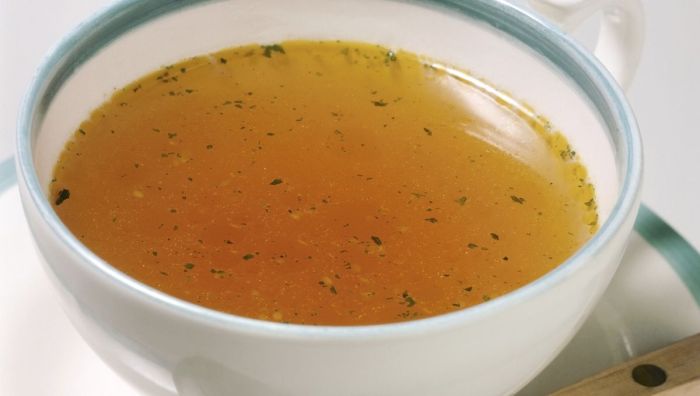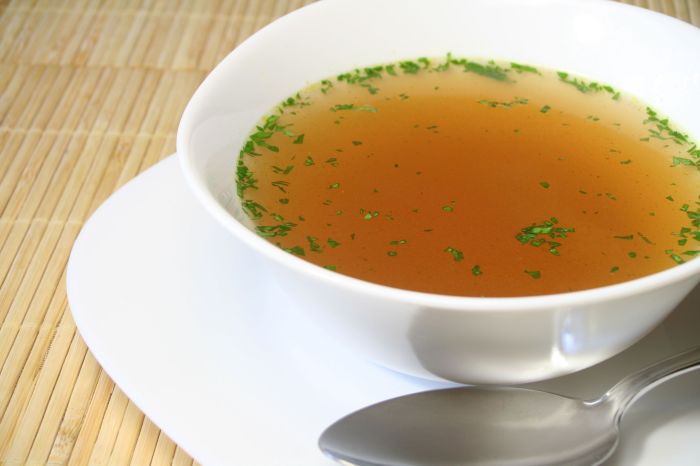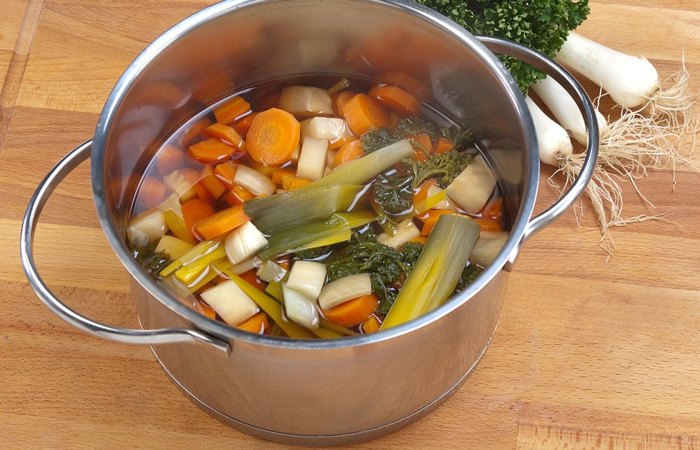Embark on a gastronomic journey as we delve into the world of broth from the French for complete crossword, where culinary history, cultural significance, and nutritional value intertwine. Prepare your palates for a comprehensive exploration that will tantalize your taste buds and expand your culinary knowledge.
From its humble origins to its modern-day innovations, broth has played a pivotal role in shaping culinary traditions across the globe. Join us as we uncover the secrets of this versatile ingredient, discovering its diverse applications, health benefits, and cultural significance.
Origin and Etymology of “Broth”
The word “broth” derives from the French word “broche,” which means “to spit.” This term was initially used to describe a thin, watery liquid that was used to spit out after rinsing the mouth. Over time, the meaning of “broth” evolved to refer to a clear, savory liquid made by simmering meat, vegetables, or bones in water.
The term “broth” has undergone linguistic variations across different cultures. In Spanish, it is known as “caldo,” while in Italian, it is referred to as “brodo.” In many Asian cuisines, the term “stock” is often used interchangeably with “broth,” although there are subtle differences in their preparation and usage.
Types of Broth

Vegetable Broth
Vegetable broth is a flavorful liquid made by simmering vegetables, such as carrots, celery, onions, and herbs, in water. It is a versatile base for soups, stews, and sauces, and is also used as a flavorful addition to rice and other grains.
Meat Broth
Meat broth is prepared by simmering meat, such as beef, chicken, or pork, in water. It is rich in protein and collagen, and adds a savory depth of flavor to dishes. Meat broth is commonly used as a base for soups, stews, and gravies.
Fish Broth
Fish broth is made by simmering fish bones, heads, and fins in water. It has a delicate and slightly salty flavor, and is often used in seafood soups and stews. Fish broth is also a key ingredient in many Asian dishes, such as ramen and miso soup.
Bone Broth, Broth from the french for complete crossword
Bone broth is made by simmering animal bones, such as beef, chicken, or pork, in water for an extended period of time. It is rich in collagen, minerals, and other nutrients, and is believed to have several health benefits, including improved joint health and gut function.
Culinary Applications of Broth: Broth From The French For Complete Crossword

Broth is a versatile ingredient that can be used in a wide variety of culinary applications.
- Soups and Stews:Broth is the base for many soups and stews, providing flavor and depth. It can be used to create both clear and creamy soups, and can be customized with a variety of ingredients.
- Sauces:Broth can be used to make flavorful sauces, such as gravy, pan sauces, and marinades. It adds flavor and moisture to meat, fish, and vegetables.
- Braising and Poaching:Broth is used as a liquid for braising and poaching meat, fish, and vegetables. It helps to tenderize the ingredients and infuse them with flavor.
Nutritional Value of Broth

Broth is a nutritious liquid that is rich in vitamins, minerals, and collagen.
- Vitamins and Minerals:Broth contains a variety of vitamins and minerals, including vitamin A, vitamin C, potassium, and calcium. These nutrients are essential for overall health and well-being.
- Collagen:Broth is a good source of collagen, a protein that is important for joint health, skin elasticity, and gut function. Collagen has been shown to have several health benefits, including reduced joint pain, improved skin health, and better gut health.
Cultural Significance of Broth
Broth has been a staple food source and a symbol of comfort and nourishment in many cultures around the world.
- Chinese Culture:In Chinese culture, broth is considered to be a vital part of a healthy diet. It is used in a variety of dishes, including soups, stews, and congee. Broth is also believed to have medicinal properties and is often used to treat colds and other illnesses.
- Jewish Culture:Broth is an important part of Jewish cuisine. It is used in a variety of dishes, including chicken soup, matzo ball soup, and kreplach. Broth is also a symbol of hospitality and is often served to guests.
- Vietnamese Culture:In Vietnamese culture, broth is a key ingredient in many dishes, including pho, bun bo hue, and cha ca. Broth is also used as a dipping sauce for rice paper rolls and other Vietnamese dishes.
Modern Innovations in Broth Making

Recent advancements and trends in broth making have made it easier and more convenient to enjoy this nutritious and flavorful liquid.
- Pressure Cookers:Pressure cookers can be used to make broth in a fraction of the time it takes to simmer on the stovetop. This method produces a rich and flavorful broth that is perfect for soups, stews, and sauces.
- Slow Cookers:Slow cookers can be used to make broth overnight or while you are away at work. This method produces a broth that is full of flavor and nutrients.
- Sous Vide:Sous vide is a cooking technique that involves vacuum-sealing food and cooking it in a water bath at a precise temperature. This method can be used to make broth that is clear, flavorful, and packed with nutrients.
Query Resolution
What is the origin of the word “broth”?
The word “broth” originates from the Old French word “brod,” which itself comes from the Latin word “brodium,” meaning “a thin soup.”
How many types of broth are there?
There are numerous types of broth, categorized based on ingredients or cooking methods. Some common types include vegetable broth, meat broth, fish broth, and bone broth.
What are the health benefits of broth?
Broth is rich in vitamins, minerals, and collagen, making it beneficial for hydration, joint health, and gut health.
What are some modern innovations in broth making?
Modern innovations in broth making include the use of pressure cookers, slow cookers, and sous vide techniques, which enhance flavor, convenience, and nutritional value.